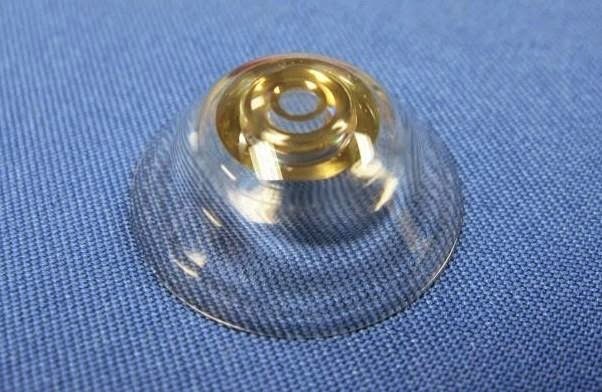Eric Tremblay, Optics Specialist, from Ecole Polytechnique Federale de Lausanne in Switzerland said that they think those lenses hold promises for AMD (Age Related Macular Degeneration) and low vision. There are, already in the market, the glasses with AMD which have mounted telescope but they look bulky and intervene with social interaction. They also don’t have tracking of eye movement and makes the users to position their eyes and slant their heads to use them. The very first vision of telescopic lenses was publicized in 2013 which 2.8 times magnifies.
Scientists, since then, have been tweaking the membrane of the lenses and focusing on accessories development to make smarter eye wears which would be more comfortable for longer periods resulting into usable product for daily life. These lenses are made operative by placing a very thin reflective telescope inside the lens of 1.55mm thickness. Microscopic mirrors within bouncing light around expand the sizes of seen objects and also magnify the view which seems seeing through binoculars of low magnification. Researchers said that the telescopic lenses, at this time, are made up of a rigid lens which is known as scleral lens. They are bigger in diameter than the soft typical contacts you might be familiar with; they are valuable for special cases like the people having corneas of irregular shapes.
Researchers told that although they are rigid and large but scleral lenses are comfortable and safe for special applications. They also present an appealing platform for various technologies like sensors, optics and the electronics similar to the ones in telescopic contact lenses. The eventual lenses are made up after various precision cut and cautiously assembled plastic pieces, polarising thin films, aluminium mirrors and with biologically safe glues. The researchers have consumed couple of last years in making the lenses more breathable, a critical requirement, because the eye requires a steady oxygen supply. They are being incorporated with microscopic air channels of about 0.1mm size within the lenses, to gain oxygen permeability, allowing the oxygen to flow underneath and around the complex, normally impermeable optical structure to reach the cornea.
The electronic glasses dichotomized with the lenses basically use a light detector and a tiny light source for identifying the winks, at the same time, ignoring the blinks. The wearer has to wink his/her right eye to magnify the vision and left eye for the normal vision. This shuffling functionality is critical for the lenses for being broadly useful for non AMD patients who will be capable of having on demand magnification. This prototype of the lenses was revealed in the meeting of American Association for the Advancement of Science (AAAS) in San Jose, California.
Learn: What Are Contact Lenses






















